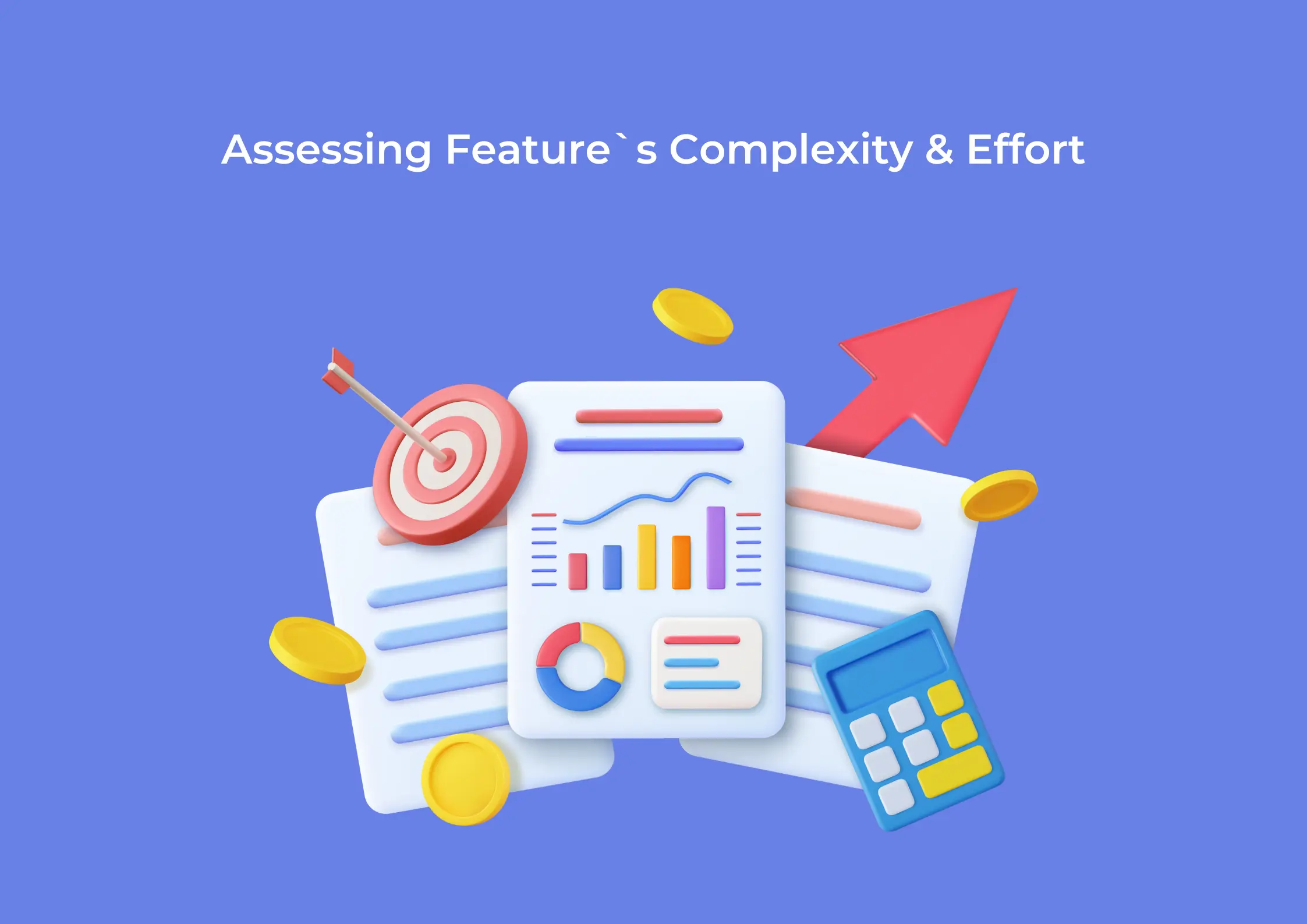When it comes to building new features, estimating complexity and effort is a crucial step in prioritizing features, ensuring smooth execution and realistic timelines. However, gauging these factors accurately can be challenging, especially when working with unknowns, dependencies, and potential technical hurdles. This article provides a practical framework for assessing the various elements contributing to a feature`s complexity and the effort it would take to build it. By applying these techniques, product managers and development teams can create more reliable estimates, prioritize effectively, and ultimately deliver high-quality features with greater confidence.
1. Understand the Feature Requirements
- Clarify functionality: This is the foundation of assessing complexity. Understanding what the feature should do involves not just high-level descriptions but also specifics on behaviors, workflows, and edge cases. Are there fail-safes, conditional behaviors, or specific criteria that might complicate implementation? Misunderstanding these can lead to missed requirements and increased complexity during development.
- User flows and use cases: Map out the end-to-end experience, considering all scenarios. These flows help identify touchpoints within the system and where different parts of the feature may interact with each other or with other systems. Complex user flows with multiple decision points or special cases often mean more coding effort, more testing, and potentially more troubleshooting later on.
2. Break Down the Feature
- Divide into smaller tasks: Breaking down a large feature into granular tasks helps reveal the individual components that contribute to complexity. Tasks could involve changes in the backend (e.g., database updates), front-end (e.g., UI/UX tweaks), or integrations with external tools, each of which may have its own unique complexity. I have previously written a full and comprehensive guide on how to decompose a feature into user stories and smaller tasks in the best possible way. Check it out here if you need guidance.
- Dependencies: Dependencies can significantly impact timeline and complexity. If the feature relies on other teams, tools, or specific APIs, these external factors could introduce delays. Dependencies might also involve modifying older, potentially fragile code that requires extra care or specific expertise.
3. Assess Technical Complexity
- New vs. existing components: If the feature uses existing components, you may save development time, though adjustments might still be required. New components, however, often require more planning, testing, and validation, especially if they must work seamlessly within a pre-existing system.
- Architecture impact: Understanding how the feature interacts with the system’s architecture can highlight possible challenges. For example, does it require reconfiguring how data flows or adjusting storage mechanisms? Architectural changes are particularly complex if they affect multiple areas of the codebase or involve scaling considerations.
- Integration with third parties: Third-party integrations can add technical risk and complexity. Unexpected API behavior, rate limits, or downtime of external systems could affect your timeline. Regularly monitoring integration points and planning for error-handling mechanisms can help mitigate these risks.
- Scalability and performance considerations: Features expected to handle large data volumes, real-time updates, or high user concurrency need careful optimization. Assessing scalability needs early can help prevent performance bottlenecks but often requires additional technical expertise.
4. Estimate Design Effort
- UI/UX complexity: Detailed UI elements like custom animations or interactive transitions can increase both design and development effort. If the feature requires a unique visual design or intricate user interactions, consider involving UI/UX designers early to assess potential challenges and streamline feedback cycles.
- Prototyping and user testing: Prototyping allows for early testing of ideas with minimal development effort, helping identify usability issues that might be harder to change later on. Allocate time for creating interactive prototypes, gathering user feedback, and iterating based on insights to ensure the design aligns with user needs.
5. Development Effort
- Coding time: Estimating the coding time for each task involves considering developer familiarity with the codebase, tech stack, and any special requirements. Features that involve algorithms, complex calculations, or specialized libraries may require extra time.
- Bug fixing and testing: Testing should include both automated tests (like unit and integration tests) and manual testing for more complex features. Factor in time for identifying and fixing bugs, especially for features that introduce new logic or interact with multiple parts of the system.
- Review and iteration: Code reviews can catch issues early but also require time. Additionally, feedback loops during review or unexpected iterations may add to the timeline, particularly if the feature requires multiple rounds of refinement.
6. Consider Team Capacity
- Experience level: Developer experience can affect the time required to implement and troubleshoot a feature. Junior developers may need additional guidance or time, whereas senior developers might complete complex tasks more efficiently but could be occupied with other high-priority items.
- Team size and collaboration: While a larger team can help accelerate delivery, it also adds complexity in terms of communication, coordination, and potential merge conflicts. Clear task ownership and effective communication can help manage this.
7. Use Estimation Techniques
- T-shirt sizing: This approach groups tasks into categories (Small, Medium, Large, XL) to provide a high-level overview of complexity and effort without specific time allocations. It works well as an initial assessment or when comparing similar features.
- Story points (Agile): Assigning story points based on relative difficulty helps in prioritizing tasks and allocating resources. The Fibonacci sequence can highlight differences in complexity—e.g., an 8-point task is significantly more complex than a 5-point task.
- Time-based estimation: This is a more precise method but often relies on historical data and developer familiarity. Cross-checking with similar completed tasks can improve accuracy.
8. Risk and Uncertainty
- Unknowns: Every feature has a degree of uncertainty, but those involving new technologies, untested design patterns, or complex integrations are particularly challenging. Identifying and flagging these early can help allocate time for preliminary research or proof-of-concept development.
- Buffer time: Building in buffer time is crucial, especially for high-risk features. A buffer accounts for unanticipated delays, complexities, or additional bug fixes that might arise as development progresses.
To sum it up:
By systematically assessing each of these factors, you gain a comprehensive view of the development effort and complexity involved in implementing a feature. This structured approach enables more accurate time and resource allocation, ensuring that teams can set realistic expectations and prioritize effectively.
Want to Explore More on This Topic?
Delve deeper with these curated resources! Discover insightful articles, expert blogs, and top-rated books to enhance your knowledge and skills.
Note: Some links are affiliate links, which means I may earn a small commission if you decide to make a purchase.
Software Estimation: Demystifying the Black Art (Developer Best Practices) by Steve McConnell
Discover how to:
- Estimate schedule and cost―or estimate the functionality that can be delivered within a given time frame
- Avoid common software estimation mistakes
- Learn estimation techniques for you, your team, and your organization
- Estimate specific project activities―including development, management, and defect correction
- Apply estimation approaches to any type of project―small or large, agile or traditional
- Navigate the shark-infested political waters that surround project estimates
A thorough guide aimed at improving the accuracy and productivity of software project estimation. It covers various estimation methods, including size, effort, cost, and schedule estimation. The book emphasizes best practices and offers practical methodologies, templates, and tools, such as the Delphi and analogy-based estimation techniques. Additionally, it introduces a new method called Software Size Units (SSU) for measuring software size. Overall, it’s a valuable resource for both beginners and experienced estimators.





